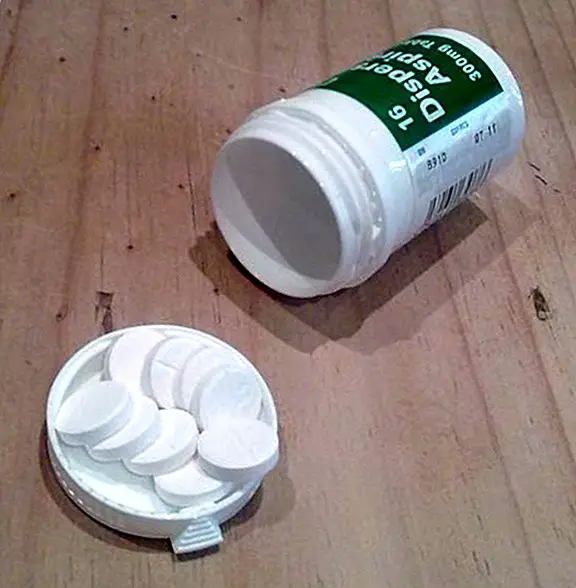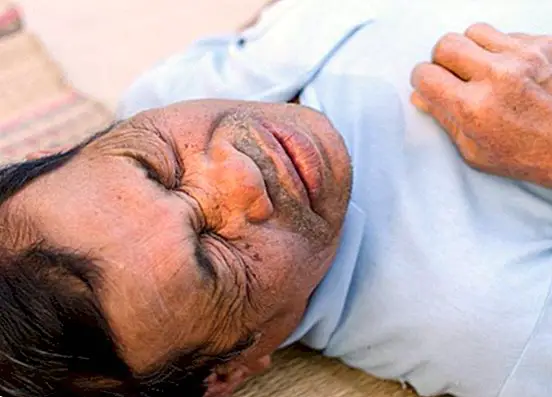How to take or measure the temperature of the baby and the child
The fever It is considered medically as the increase in body temperature above what is considered normal, caused mainly by a pathophysiological event (either by inflammation or by an infection). That is, it should not be confused with hyperthermia (which is the increase in temperature above the normal hypothalamic value due to the failure of heat evacuation systems, such as heat stroke).
The normal temperature of the human body oscillates between 35 and 37 º C, although we must bear in mind that fever itself is not at all harmful, since it is the way our body has to fight infections.

At the time of take the child's temperature, it is possible to do it orally, rectally or axillary. In our case, if you still have mercury thermometers, we advise you to use a digital thermometer.
Fever in the baby and in the child
Generally, most of the different febrile episodes that children present tend to be concentrated in the 12-month to 3-year-old stage.
Precisely because of the fear that the little ones get sick, many parents tend to feed their children excessively, which greatly favors the development of viral fevers, the result of the reaction to so much ingestion.
When the baby or child has a fever, it is always advisable to go to the pediatrician, who will assess and prescribe the guidelines or medications that the mother to acquire.
Sometimes, you must resort to Diacepam intravenously or in microenemas, but only rarely.
In any case, it is always recommended that the child rests to recover from the fever, following the basic advice provided by the pediatrician.

On the other hand, we must bear in mind that the fever It is not a disease in itself but a symptom that something is not going well. It is the normal and useful reaction of the organism that fights against microorganisms who attack him.
It is therefore not essential to concentrate all the attention on the thermometer and the efforts to make it go down at any cost. On the other hand, certain viruses die above 39 degrees and instead continue to develop at 37 degrees.
The thermometer It rises very quickly in children, but the fever is not proportional to the severity of a disease, because even a sad rhinopharyngitis or a prolonged exposure to the sun, for example, they raise the temperature to 40 degrees.
How to take the child's temperature correctly
How to take the temperature of the child orally
If the child is older, and is willing to cooperate, it is one of the easiest ways to measure the temperature:
- Place the end of the thermometer under your tongue and ask your child to close their lips. If necessary, ask him to relax and breathe through his nose normally.
- Wait until the digital thermometer plays the number of beeps that indicate that the temperature has already been taken.
- Read the number that appears on the screen and write it down, also taking into account the time of day.
How to take the child's temperature by the axillary route
Although it tends to not be as accurate as oral or rectal temperature, it is useful when the child can not hold the thermometer in his mouth:
- Remove your child's shirt or shirt and put the thermometer in the armpit.
- Fold the child's arm over the chest to hold the thermometer better.
- Wait until you hear the number of beeps on the thermometer. Enter the number that appears on the screen and the time of day.

How to take the child's temperature rectally
- Lubricate the end of the thermometer with a lubricant (eg Vaseline).
- Place your child face down on your lap or on a flat, firm surface, or on your back with your legs bent over your chest.
- With the other hand, insert the thermometer into the anal opening, carefully. Hold it between the middle finger and the ring finger.
- Wait until you hear the number of beeps on the thermometer. Enter the number that appears on the screen and the time of day.
Issues that you should keep in mind
It is necessary to monitor the fever of the smallest by the risk of seizures. The causes of fever can be diverse:
- A very warm child, exposed for a long time to the Sun or in a very hot room.
- The output of the first teeth.
- A respiratory infection or a reaction to a vaccine.

Sometimes the fever is not accompanied by other symptoms and may disappear in 24 or 48 hours. If this persists, it is necessary to go to the pediatrician and, especially, in the case of the girls, since it may be due to a urine infection.
While waiting for the doctor who can diagnose the cause and act on it, parents can follow these recommendations:
- Check the temperature of the room, which should be between 18 and 19 degrees.
- Keep the child with little clothing and without covering.
- Give it a bath of about ten minutes, the temperature of the water will be one or two degrees lower than that of the child, in case there is a lot of fever.
- Place a wet towel in cold, drained water on forehead and wrists.
- It is good to drink fresh water or juice.
- Do not force him to eat.


